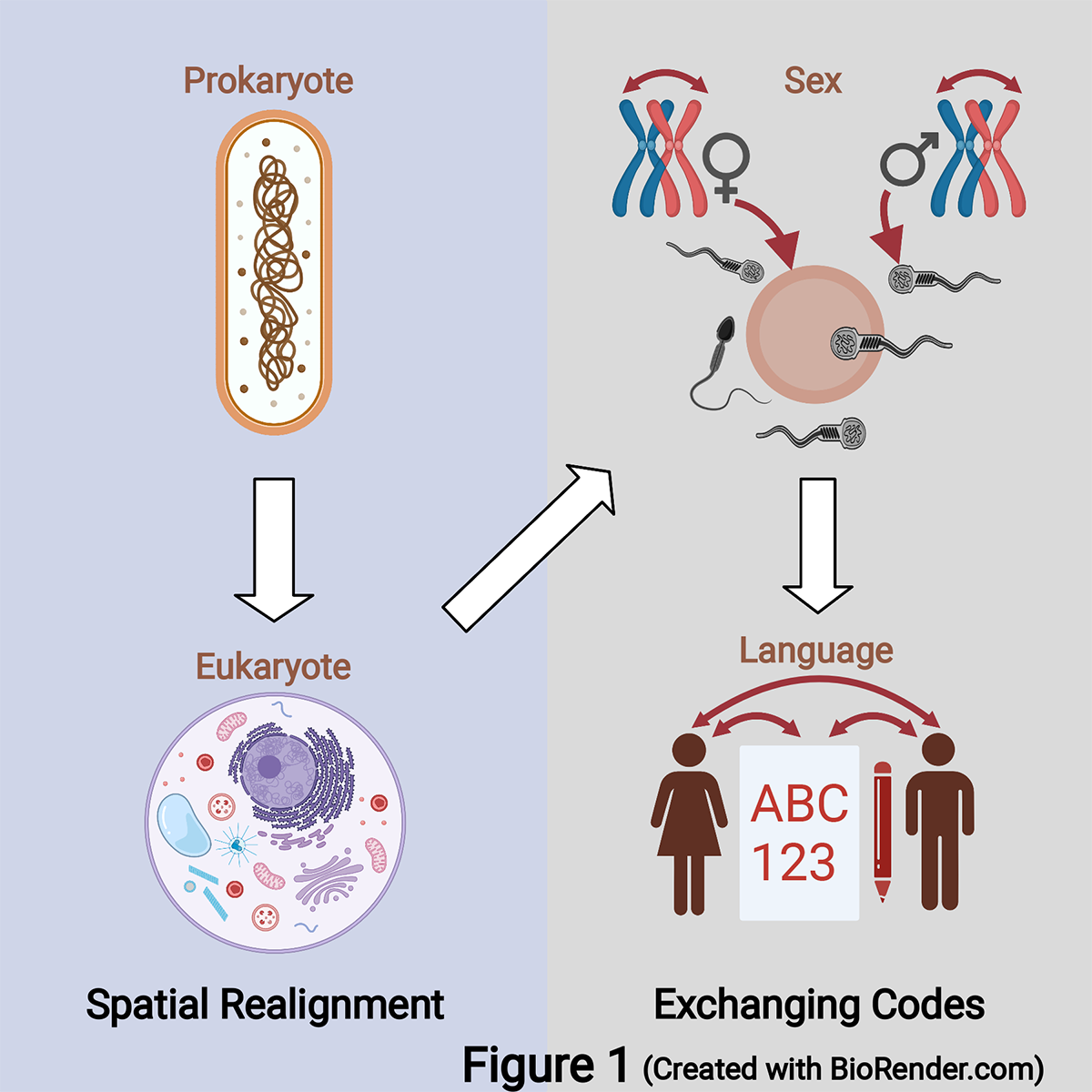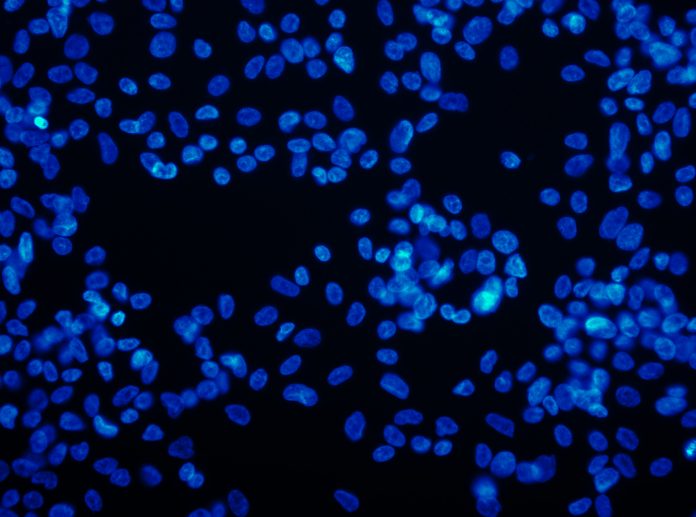Chris Girard, Associate Professor at Florida International University, shares his expertise on sex, language & coevolving informatics
Coevolving informatics illuminates the capacity of increasingly complex systems to remove barriers to information flow. Evolving biological complexity exemplifies this trend. For example, cellular reproduction, sex and language are key evolutionary transitions, providing new buffers for information flowing to offspring. In more complex systems, buffers for information rely on multisite information exchange. This more highly evolved information buffer has a biological foundation in sex.
Barriers to genetic information flow between parents and offspring were initially overcome, over billions of years, by evolutionary realignment of space inside non-sexual organisms. A landmark evolutionary transition was between simple cells with no nuclei (prokaryotes) and complex cells (eukaryotes) that package the next generation’s information in membrane- enclosed nuclei (Figure 1). Spatial enclosure in nuclei buffered cross-generational information flow.
An evolutionary inflection point
The onset of sex marks an evolutionary inflection point. Sex and later evolutionary transitions overcome barriers to information flow by exchanging and recombining information. Multisite information exchanges override spatial buffers.
Sex overcomes two spatial barriers that are present in non-sexual duplication of heritable information. First, meiotic sex uncouples sources of information on the same chromosome that have opposing effects on organism fitness. This spatial uncoupling and the exchange of information on genetic crossover (Figure 1) reduce information-flow vulnerability to pathogens (disease) and prevent disadvantageous mutations (mistakes) from accumulating. Second, sex overcomes constraints arising in clonal (non-sexual) reproduction wherein a cell already containing all the organism’s features mechanically divides into exact duplicates. In contrast, sex-based meiosis occurs in spatially separated female and male reproductive organs. Because code-transmitting sperm and eggs are made in spatially separated locations, sperm require motility or transportability. Overcoming spatial and energetic barriers of distance, sex enables the exchange of genetic codes from non-identical parents. This exchange creates unique characteristics in individuals.

Language-based information
Marking another evolutionary landmark, language-based information is exchanged among diverse, spatially separated sites in human collective memory and written texts. Language-assisted sharing of culture expands the flow of heritable information by overcoming physical barriers of individual memory loss and mortality. Language reduces information-flow constraints insofar as sentences derive meaning not only from their components but from syntactical ordering. Syntactical flexibility allows language to communicate innumerable possibilities that do not yet exist. Consequently, linguistic symbols can acquire new meanings independent of a one-to-one correspondence with physical entities already in the local habit. Through the evolution of multisite information exchange in complex systems, information flows become less constrained by physical topologies.
Please note: This is a commercial profile
© 2019. This work is licensed under CC-BY-NC-ND.











